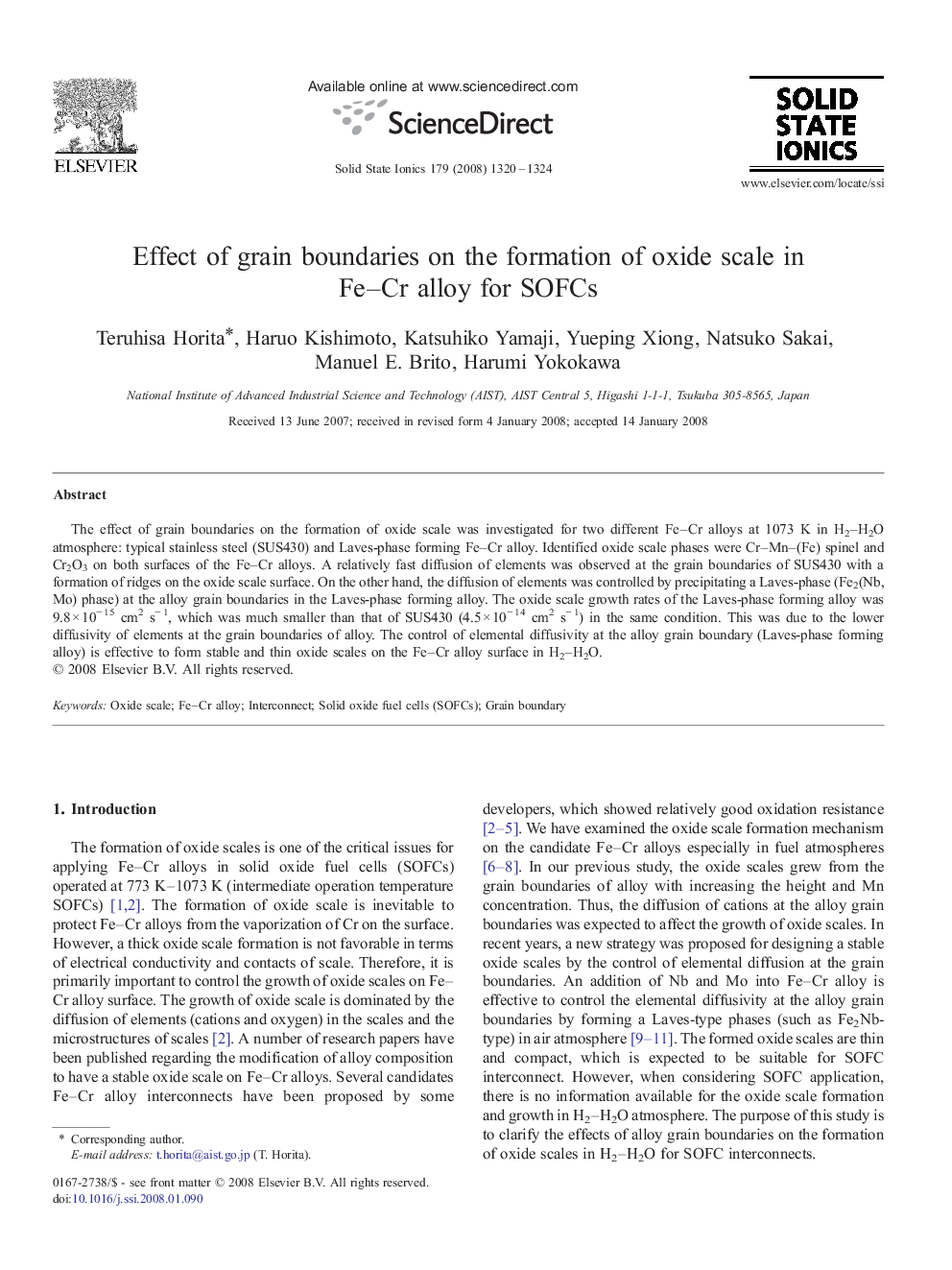| Article ID | Journal | Published Year | Pages | File Type |
|---|---|---|---|---|
| 1297110 | Solid State Ionics | 2008 | 5 Pages |
The effect of grain boundaries on the formation of oxide scale was investigated for two different Fe–Cr alloys at 1073 K in H2–H2O atmosphere: typical stainless steel (SUS430) and Laves-phase forming Fe–Cr alloy. Identified oxide scale phases were Cr–Mn–(Fe) spinel and Cr2O3 on both surfaces of the Fe–Cr alloys. A relatively fast diffusion of elements was observed at the grain boundaries of SUS430 with a formation of ridges on the oxide scale surface. On the other hand, the diffusion of elements was controlled by precipitating a Laves-phase (Fe2(Nb, Mo) phase) at the alloy grain boundaries in the Laves-phase forming alloy. The oxide scale growth rates of the Laves-phase forming alloy was 9.8 × 10− 15 cm2 s− 1, which was much smaller than that of SUS430 (4.5 × 10− 14 cm2 s− 1) in the same condition. This was due to the lower diffusivity of elements at the grain boundaries of alloy. The control of elemental diffusivity at the alloy grain boundary (Laves-phase forming alloy) is effective to form stable and thin oxide scales on the Fe–Cr alloy surface in H2–H2O.
